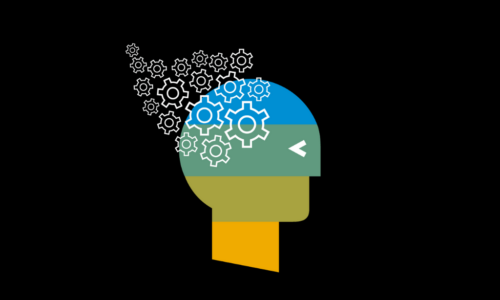To Centralize or Localize? Solving the L&D Locus Issue

This argument isn’t about other resources. Media production and course administration isn’t a big issue. Those can be centralized for efficiency. It’s the design where the issue arises. So, what are the trade-offs?
Centralized Learning
The benefits of a centralized L&D come from efficiency and a unified vision. The folks are sharing a common view of their mission and approaches. (With the provision, of course, that it’s a good vision!)
Expenses for supporting L&D are likewise centralized. There’s likely only one learning management system, and one authoring tool in use. The costs are controlled for any other platforms as well.
This also means a single voice to the executive suite, and potentially even participation. There is the opportunity to talk about moving from training to learning, and even bring up the possibility of a learning culture.
The understanding of the intent and approach is shared across the group. Everyone should be operating under the same beliefs about learning and the same design approach. There’s a consistency that has learner benefits in expectations.
Of course, a richer vision of L&D can mean broader responsibilities, including performance support, information portals (aka Learning Experience Platforms), and even social media. Again, unified into a coherent vision, the Performance Ecosystem is a possibility.
Distributed Learning
On the flip side is the distributed model. Here, the teams are embedded within the units they serve. The accrued benefits are tied to a closer ‘customer’ relationship and more responsiveness.
Different units have different audiences, and those audiences have different needs. What sales teams need differ from what operations needs, and what customers need. Each group has different drivers, and different outcomes.
Being responsive is key. The teams can build close relationships with their stakeholders, and have the ability to gain insight into the domain. The boundaries can blur and the IDs can serve as experts and experts can serve as IDs.
Similarly, the teams can use the right tools for the job. If sales needs more branching scenarios while operations needs more simulations, they can allocate resources appropriately. They can also skill appropriately, developing the specific knowledge about the domain.
Academically, content knowledge and pedagogical knowledge are separate, as is pedagogical content knowledge. Content knowledge is the domain: sales, operations, etc. Pedagogical knowledge is about how people learn and how to instruct. Pedagogical content knowledge is the unique knowledge about how to teach this topic. And that can be localized and developed.
Finding the Right Balance in Corporate Learning
There are obvious downsides. These include financial and performance issues. The goal should be to minimize the downsides and capitalize on the strengths. Finding the right balance will be specific to an organization, but understanding the trade-offs is important.
Charles Jennings, in his case study in Revolutionize Learning & Development, talked about how, as the new CLO at Reuters, he found that there was a plethora of learning services across the organization. The cost redundancies were a financial burden. That’s not a sustainable approach.
On the other hand, an organization I’ve worked with basically runs face-to-face training as the solution to every problem. That’s unresponsive to the diversity of needs. There are times for job aids, eLearning, and social solutions.
With a distributed approach, what’s learned in one group isn’t going to be automatically known in another. With a centralized approach, the solution’s less likely to be optimally targeted.
Intermediate Training Approaches
These problems aren’t new, and the approaches are varied. But with technology, we have some new tools in our arsenal. And some organizational flexibility means that we’re not always tied to either/or.
Sandra Wills, when she was leading the learning group at the University of Melbourne, came up with a hub and spoke model. She had a central unit that handled media production, and classrooms, but there were also groups distributed to the different faculties (e.g medicine, engineering, humanities, etc). What she instituted was a rotation, where one member from each distributed group would do a year placement in the central group, for reciprocal sharing.
In another case study from Revolutionize Learning & Development, Allison Anderson talked about how Intel started sharing. They created a series of events and practices to share how they were approaching the shared task of coming to grips with technology for learning.
And on an engagement with a large manufacturer, I found many separate instances of social learning. Using a series of personal connections within the organization, I was able to document a wide variety of experiments. Even documenting and sharing this can facilitate learning.
Communicating and Collaborating
A smart distribution of shared and separate resources is the key to bridging the two solutions. Determining what should be centralized, and what needs to be distributed, will be dependent on the particular organization.
The goal is to ensure communication. What’s known needs to be owned across the organization. As Jane Bozarth conveys in Show Your Work, you want to ensure that what’s being done is known. In particular, showing the thinking behind decisions. There are many mechanisms: lunch get-togethers, regular webinars, newsletters, or just discussion groups.
Creating a learning culture is critical. You want L&D to be modeling the best practices in learning, and learning together is the best vision of that. You want to be experimenting, and sharing the learnings. You want everyone to know about learning science. If someone goes to an event or takes a course, they should summarize the learnings for all. Everyone should be regularly answering the question: what did you learn this week that everyone else should know about?
Resource-wise, I’ll suggest the goal should be to start with basic capabilities – course management, authoring – and add the unique capabilities – scenarios, AR/VR, etc – as needed. However, only one platform for each need should be obtained, and the understanding of when and how to use each should be shared.
The point being that you can, and should, be finding ways to share both learnings and resources, as well as efficiency and effectiveness. We should know the most about learning and working together, and we should practice what we preach.




